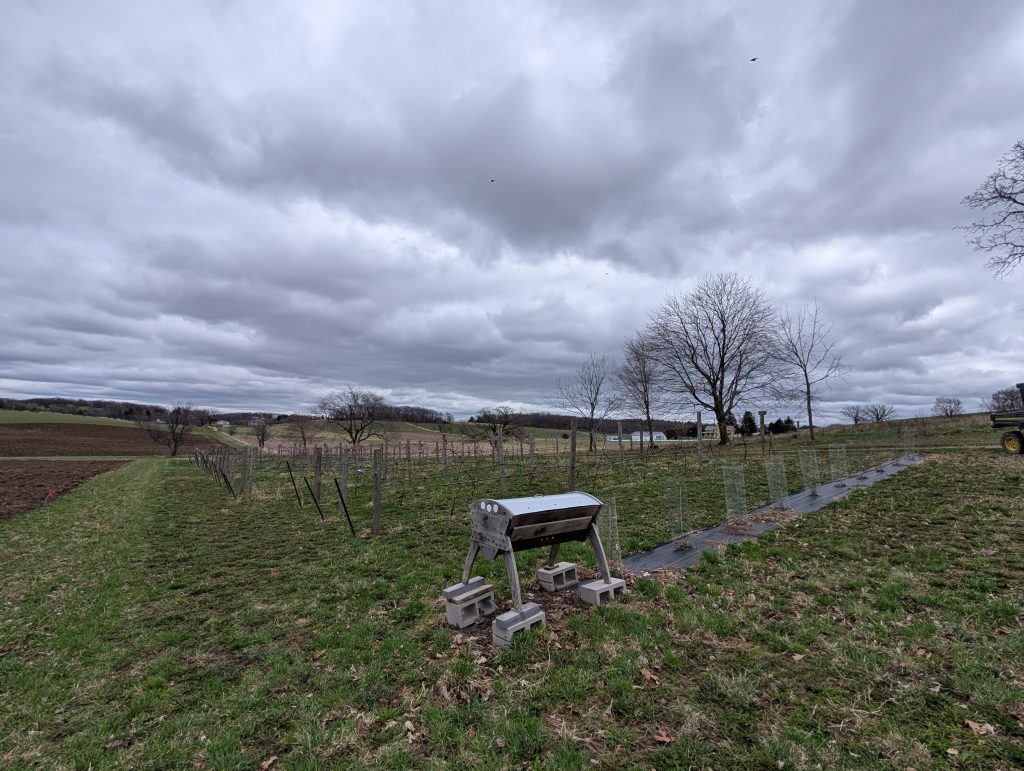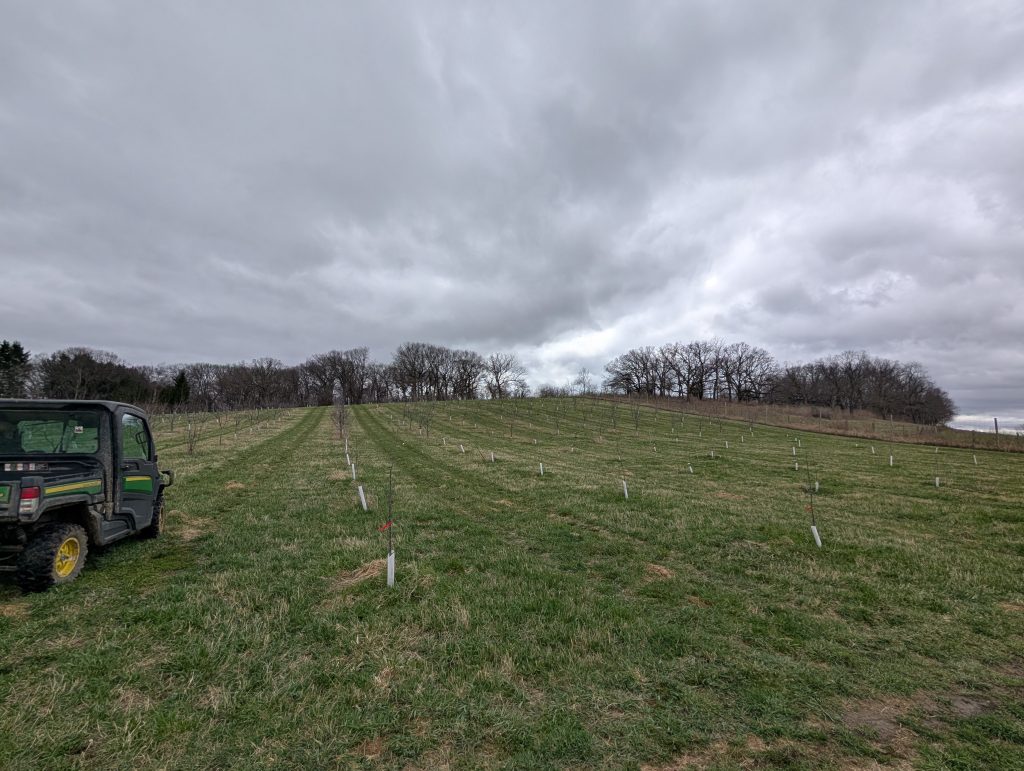Notes from the Field: A Growers Perspective – Ben Kraus Chat #1
Welcome back to another season of Notes from the Field! This year’s Notes from the Field will follow Ben Kraus with Gwenyn Hill Farm (Waukesha). The goal of this newsletter is to hear from the grower’s perspective and foster connection between fruit growers. I’ll be focusing our discussions on phenology/fruit development and integrated pest management. As we kick off the growing season, hear how Ben is tackling early-season management challenges.
Ben Kraus took over as perennials manager at Gwenyn Hill Farm in 2023. Gwenyn Hill is a diversified organic farm that grows many specialty crops, sold through their on-site farm stand, CSA program, and farmers market (Brookfield). Most fruit is contained within a 4-acre fenced-in block, including intermixed tree fruit (apples, cherries, pears, peaches, plums, hardy kiwi, quince), along with a few rows of berries (day-neutral strawberries, black/red/pink currants, elderberries, gooseberries) grown along one edge of the 4-acre block. Across the road from the 4-acre fruit block, Ben also grows ~150 vines of table grapes, bordered by saskatoons (serviceberries) on one end and rhubarb on the other.


I visited with Ben at Gwenyn Hill on Monday, April 21. He took me around on a farm tour, and we chatted about plans for this growing season as well as current management challenges. This year, Ben is considering putting in a raspberry trial between tree rows, testing out a few varieties for hardiness and general fruit quality. Currently, tree phenology ranges anywhere from green tip (apples) to popcorn (plum) stage.
Ben does not typically have issues with early-season insect pests like mites, scale and aphids, therefore does not apply dormant or early-season oil. For further information on early-season insect management, including scouting and management recommendations, check out this 2024 UW Fruit News article: Dormant and Early Season Insect/Mite Control.
Although recent rain was much needed, it poses a bit of a challenge for early-season disease management, like apple scab, as most protectants will wash off after ~1 inch of rain. Last year, Ben trialled Regalia (Extract of Reynoutria sachalinensis), but did not achieve desired levels of control. Ben is currently rotating organic Sulfur and Double Nickel (Bacillus amyloliquefaciens strain D747) for early-season apple scab and disease prevention. He also did an excellent job with sanitation this year, removing nearly all fallen leaves, fruit and prunings. Sanitation is important to limit presence of overwintering disease inoculum from in/around the orchard.
For further information on early-season apple scab management, check out Leslie Holland’s recent publication on Apple Scab Risk with Warming Weather – Stay Covered from Green Tip through Tight Cluster to learn more about product recommendations and application timing.
That’s all for now – I’ll check back in with Ben in our next Wisconsin Fruit Newsletter on May 9th!
This article series is NOT intended to be prescriptive for other orchards. It is simply an opportunity for our readership to hear from other growers about their experiences growing fruit crops in Wisconsin.
Growing the same crop does not always justify the same practices. Management decisions at your farm should be tailored to your operation and consider location, regional climate, disease and pest history of your vineyard, and your varieties.
The mention of a product is NOT an endorsement. Always follow the instructions on product labels and consult weather stations (ex. NEWA) in your area for current weather forecast and disease and pest prediction models.
This article was posted in Notes from the Field and tagged Ben Kraus, Josie Dillon, Notes from the Field.
